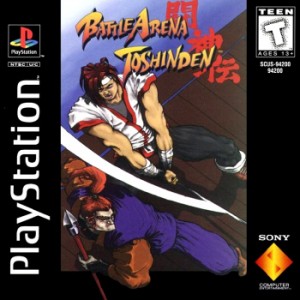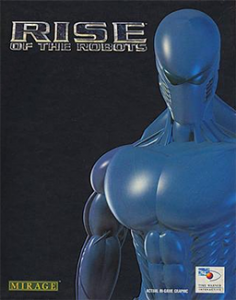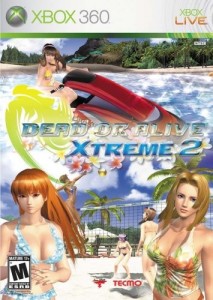New Years Gaming Special: Maximum Letdown, $20 Game of the Week, and Lost Classics
by William Talley, filed in $20 Game Of The Week, Games, Lost Classics, Maximum Letdown on Jan.06, 2009
It’s a New Year, and one that looks exciting for geeks everywhere. To celebrate (and to make up for my tardiness), I’ve got a three-piece of new game related content. Along with the $20 GOTW and Lost Classics, we have the debut of our new section, Maximum Letdown. What is Maximum Letdown? Well you remember all the gaming classics from your youth? You know, the beloved Castlevanias, Contras, Zeldas, Street Fighter 2 Turbos, and the Final Fantasies that we love to reminisce about. Of course, there are other games from that era that we don’t like to talk about so much. Remember the CD-I Mario and Zelda games? How about the Adventures of Master Chu and Drunkard Hu (WHAT!?!?)? Do you remember when the Grand Theft Auto games had lousy play control? Or better yet, Wisdom Tree’s bible games? For every Gears of War, Halo, and Castlevania released, there are a thousand more Pixar/Disney/Nickelodeon/Cartoon Network shovelware carts destined for the bargain bin, if the even make it that far. Yeah, Maximum Letdown is gonna remind you of the darkside of gaming. We’re gonna dredge up some seriously bad memories. These are the games that either didn’t deliver on their promises, had that one fatal flaw that ruined it for gamers, didn’t do its license or predecessors proper justice, or was just plain awful. This won’t be done as frequently as a Lost Classics or $20 GOTW, but we’ll have a new one up at least twice a month. Speaking of Lost Classics and $20 GOTW, the former deals with a fighting game released at the dawn of the 32-bit era, and the latter is a game based on a fighting game. So without further ado, read on after the jump.
Lost Classics: Battle Arena Toshinden (Playstation, Saturn)
 Before Soulcalibur, Takara’s Battle Arena Toshinden bought weapons-based gameplay into the third dimension. It was also a launch title for the original Playstation, and Sony used it to promote its new product. A slightly upgraded version was released on the Sega Saturn a few years later. At the time of its release, the 3-d fighting game genre emphasized realism. Games like Virtual Fighter and Tekken eschewed the fireballs and hurricane kicks of the Street Fighters and Fatal Furies in favor of realistic motion captured movements and real-world fighting styles. However, Toshinden showed that there was still a place for crazy over-the-top special attacks in the 3-d fighting game genre. The game also attempted to introduce actual 3-d movement via a sidestep maneuver (at the time, games like Tekken and Virtual Fighter still utilized a 2-d movement scheme with camera rotations and scaling in order to give the appearance of 3-d). The story is as generic as it gets in a fighting game. A secret society organizes a tournament to see who the world’s strongest fighter is. Several combatants enter, each for reasons of their own. Although subsequent entries in the series (which were published by Playmates and not Sony) weren’t as well received as the original, Toshinden helped usher in a new era for fighting games. Seeing as how this was a major seller for the original Playstation in its early days, I’m surprised that it hasn’t shown up in the Playstation Network store.
Before Soulcalibur, Takara’s Battle Arena Toshinden bought weapons-based gameplay into the third dimension. It was also a launch title for the original Playstation, and Sony used it to promote its new product. A slightly upgraded version was released on the Sega Saturn a few years later. At the time of its release, the 3-d fighting game genre emphasized realism. Games like Virtual Fighter and Tekken eschewed the fireballs and hurricane kicks of the Street Fighters and Fatal Furies in favor of realistic motion captured movements and real-world fighting styles. However, Toshinden showed that there was still a place for crazy over-the-top special attacks in the 3-d fighting game genre. The game also attempted to introduce actual 3-d movement via a sidestep maneuver (at the time, games like Tekken and Virtual Fighter still utilized a 2-d movement scheme with camera rotations and scaling in order to give the appearance of 3-d). The story is as generic as it gets in a fighting game. A secret society organizes a tournament to see who the world’s strongest fighter is. Several combatants enter, each for reasons of their own. Although subsequent entries in the series (which were published by Playmates and not Sony) weren’t as well received as the original, Toshinden helped usher in a new era for fighting games. Seeing as how this was a major seller for the original Playstation in its early days, I’m surprised that it hasn’t shown up in the Playstation Network store.
Maximum Letdown: Rise of the Robots (SNES, Genesis, Amiga, 3DO, Sega Master System, Game Boy, Game Gear, PC)
 “Graphics don’t make a game, gameplay does!” If I had a nickel for every time I heard that, there would have been no point in me going to college. In fact I could have retired at the ripe old age of 22. Still, there is a lot of truth to this line. Of course stylish visuals can benefit a game as anyone who has played Okami, Killer 7, Gears of War, or Little Big Planet can tell you. At the same time though, games like Mega Man 9 are tearing up digital download services despite having graphics from generations past, and despite its 16-bit character sprites, you’ll be far pressed to find anyone who played Fire Pro Wrestling that disliked it.
“Graphics don’t make a game, gameplay does!” If I had a nickel for every time I heard that, there would have been no point in me going to college. In fact I could have retired at the ripe old age of 22. Still, there is a lot of truth to this line. Of course stylish visuals can benefit a game as anyone who has played Okami, Killer 7, Gears of War, or Little Big Planet can tell you. At the same time though, games like Mega Man 9 are tearing up digital download services despite having graphics from generations past, and despite its 16-bit character sprites, you’ll be far pressed to find anyone who played Fire Pro Wrestling that disliked it.
If you ever needed proof that gameplay is more important than graphics, then look no further than this clunker from Mirage and Time Warner. It’s a fighting game in which the main protagonist is a cyborg who has been sent into a factory to defeat a bunch of other robots who have gone berserk after being infected by a computer virus. Now lets give credit where credit is due. CGI graphics like this were unheard of at the time, especially on cartridge systems like the SNES and Genesis (remember, this was right before Donkey Kong Country). Heck, the SNES version even included full motion video cinemas! You’d look at this game and wonder if you were looking at an early Playstation or Saturn game.
However, this my friends, is where the praise ends. The gameplay is, to put it simply, unbalanced. Each of the characters (of which there are only 7 including the boss) only have one or two special moves. This wouldn’t be a bad thing, except they are impossible to pull off. The controls redefine clunky, and many robots had a limited set of basic actions. The single player mode only lets players fight as the blue cyborg. You fight against the other robots in a predetermined order, with each getting harder as you progress to the final boss. It gets even better when playing 2-player versus. While player 1 can only select the blue cyborg, player 2 can select any of the enemy robots (including the supervisor after using a code). Even worse, the mounting difficulty from the single player mode is carried over into multiplayer, so while some of the robots barely do any damage at all, others are frustratingly cheap.
You know, Queen guitarist Brian May was billed as doing the music for this game. In fact, he even recorded an entire soundtrack for the game. Unfortunately his record label requested numerous delays, and Mirage would have had to delay the game itself. In hindsight, this would have been a very good idea, as the extra time could have been used to implement some much better gameplay. A sequel was released a few years later on Saturn and Playstation. Although it tried to correct some of the original game’s flaws and even borrowed some features from Mortal Kombat and Street Fighter, this game too was a flop. Hopefully this will NOT show up on the virtual console anytime soon. It’s a perfect example of what happens when more effort is spent on graphics than actual gameplay.
$20 Game of the Week: Dead or Alive Xtreme 2 (Xbox 360)
 Like Rumble Roses, DOAX2 is a game which I find myself enjoying more than I should. Even more shameful, I enjoy it for the same reason that I shouldn’t: the game’s blatant focus on eye candy. This game is the sequel to the Xbox original. Zack, using his winnings from Dead or Alive 4, raises Zack island from the deep, opening it up again for business. The ladies of DOA have been invited under the guises of another tournament, but it soon becomes clear that there’s no martial arts fighting involved. Once again fooled into visiting Zack’s island, the girls decide to make the best of their time. Thankfully, the girls have some more ways of utilizing their time. While the original DOAX only had volleyball, DOAX 2 has that, as well as a series of all new minigames. The wave race is self explanatory, as is the tug-of-war and the interestingly named ‘butt battle’. There is also pool-hop, a game in which you make timed-button presses to hop across to the end of the pool. Beach flags has you race against an opponent in order to grab the flag. During the night, you can visit the casino and play blackjack, poker, and roulette. The minigames range from addictive to shallow, and each require practice to master. You can also relax poolside and go for a swim if you want. You use your earnings from the days activities at the game’s shops, where you can buy new game modes, gifts for your friends, new wave riders for the race, and most importantly, new swimsuits for your girl. The relationship building from the previous game returns. You pick a partner at the game’s start, and you can try to win over the other guests by buying them gifts. The music includes a mix of hip hop, pop music, R&B, and reggae. You can adjust the playlist at the radio station, or you can even play your own custom soundtracks if you want.
Like Rumble Roses, DOAX2 is a game which I find myself enjoying more than I should. Even more shameful, I enjoy it for the same reason that I shouldn’t: the game’s blatant focus on eye candy. This game is the sequel to the Xbox original. Zack, using his winnings from Dead or Alive 4, raises Zack island from the deep, opening it up again for business. The ladies of DOA have been invited under the guises of another tournament, but it soon becomes clear that there’s no martial arts fighting involved. Once again fooled into visiting Zack’s island, the girls decide to make the best of their time. Thankfully, the girls have some more ways of utilizing their time. While the original DOAX only had volleyball, DOAX 2 has that, as well as a series of all new minigames. The wave race is self explanatory, as is the tug-of-war and the interestingly named ‘butt battle’. There is also pool-hop, a game in which you make timed-button presses to hop across to the end of the pool. Beach flags has you race against an opponent in order to grab the flag. During the night, you can visit the casino and play blackjack, poker, and roulette. The minigames range from addictive to shallow, and each require practice to master. You can also relax poolside and go for a swim if you want. You use your earnings from the days activities at the game’s shops, where you can buy new game modes, gifts for your friends, new wave riders for the race, and most importantly, new swimsuits for your girl. The relationship building from the previous game returns. You pick a partner at the game’s start, and you can try to win over the other guests by buying them gifts. The music includes a mix of hip hop, pop music, R&B, and reggae. You can adjust the playlist at the radio station, or you can even play your own custom soundtracks if you want.
Even though there is more content than its predecessor, there really isn’t much to it. You’re playing minigames to earn money to buy stuff, and your trying to build quasi-relationships with the other girls. Even so, the game still gets addictive, as fans of collect-a-thons will find themselves wrapped up trying to unlock everything. Also, Team Ninja is showcasing some beautiful graphics on the Xbox 360 (that’s pretty much a requirement, given the game’s subject matter). The game can be found at gamestop for less than $10, so if you’re a hardcore DOA fan, or if you want a little eye candy, you could do worse. Just don’t let your mother, girlfriend, or wife walk in on you playing.


 PS3
PS3
 Famicom Dojo
Famicom Dojo KEEP PLAYING
KEEP PLAYING KEEP PLAYING: Rewind
KEEP PLAYING: Rewind Powet Toys
Powet Toys Powetcast
Powetcast Hitchhiker's Guide POWETcast
Hitchhiker's Guide POWETcast














